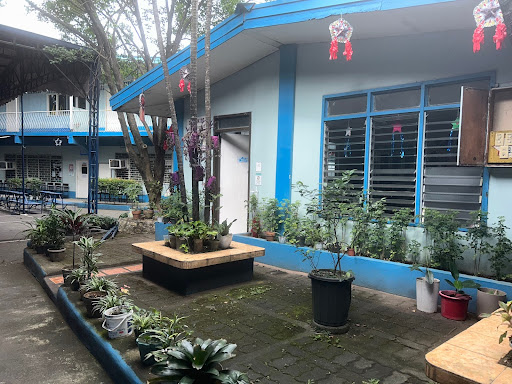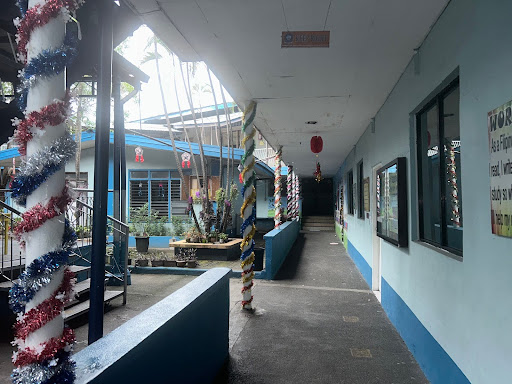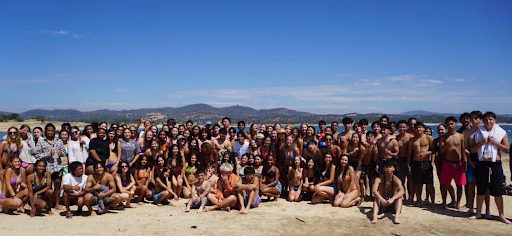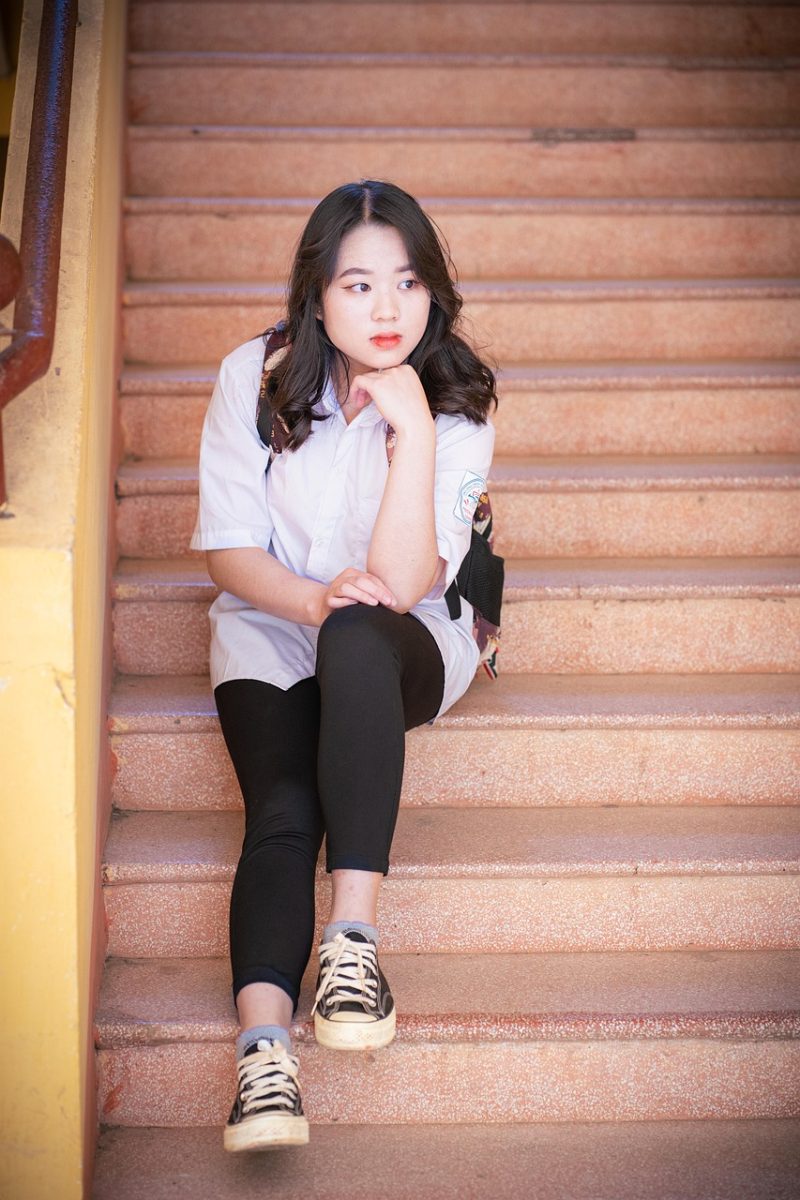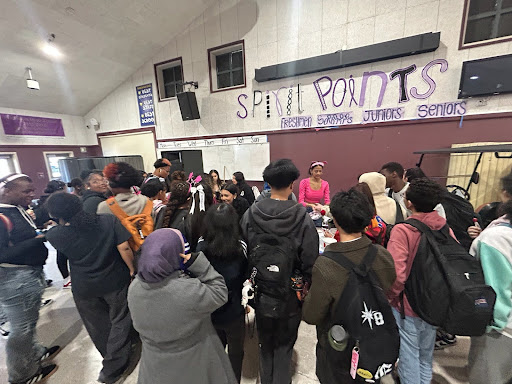In the Philippines, where about 99% of the country identifies as religious and 78.8% as Catholic, the winter school break is a big deal, with students commonly receiving around three weeks off.
Religion plays a much larger role in pre-college education in the Philippines than here in the US, which raises a couple of questions: How does the Philippine high school experience compare to one in the US, and how does religion influence the classroom there?
Private school education is the more common and preferred choice of the middle class due to its accessibility, according to Helena Rohanne, a student in Taguig, Philippines.
High school in the Philippines is divided into two levels: junior high (7th-10th grade) and senior high (11th-12th). Junior high provides the basic foundation for education, while senior
high is more focused on the student’s desired future career.
Most schools there offer K-12 or preschool-12 entirely, meaning students often have the same classmates for their entire pre-college education. For each school year, the students are divided into groups called batches, so they have the same classmates for every class throughout the year.
Students, teachers, and staff at two Philippine private schools provided an in-depth profile of what it’s like to be a student in Asia’s “Pearl of the Orient.”
Colegio De Santa Ana in Taguig is a K-12 private Catholic school. Rohanne, a 10th grade student at CDSA, is class president of her batch. One of her responsibilities is conducting homeroom.
“[For homeroom], we start with a prayer, then we sing the national anthem,” said Rohanne. “We also do this Panatang Makabayan… and then I give them all the reminders that the teachers and our class advisor gave me to instruct them. And then, (we) move on to our classes.”
The Panatang Makabayan is a Filipino national oath, similar to the American Pledge of Allegiance.
Another responsibility of Rohanne’s is reminding
her classmates about all their subjects, then submitti
ng her classmates’ assignments to the teachers. Junior
high students at Colegio de Santa Ana take 5 subjects
every day, the 10 divided into two sets that alternate
weekly.
“I have English, TLE/home economics, Filipino, CL, Edukasyon sa Pagpapakatao … for your conduct, and computer,” said Rohanne. “Then I have science, MAPEH, math and AP.”
CL stands for Christian living – a class where students learn the word of God and his commandments.
MAPEH stands for music, arts, physical education and health. AP stands for Araling Panlipunan – a standard history and social studies class. Edukasyon sa Pagpapakatao is a class that teaches values, good character and how to live a virtuous life.
Rohanne said that substance abuse and bullying are less common in her school compared to what she’s heard about US schools.
“[We don’t really have] students at a young age doing drugs,” said Rohanne. “We have that, but not as common as in the US. We do have vaping and bullying, but it’s like the school can control it immediately.”
Aside from general academics, Colegio de Santa Ana has clubs based on each subject, as well as recreational clubs such as music, arts, and sports. Rohanne is part of the school’s dance troupe.
“Everyone in my batch is like one family,” said Rohanne. “In the Philippines, it’s very common that everybody knows everyone and everyone’s nice. Most of the students are very respectful of one another, and welcoming to new students. Everyone’s friends with everyone.”
Holy Child Academy in Novaliches, Philippines, is a preschool to 12th grade private school. It is non-sectarian, meaning it is not restricted to any particular religious group.
Hazie Garcia, who has been teaching for 25 years, touched on the religious elements present in her school, as well as her experiences as an educator in the Philippines.
Garcia has taught both high school English and preschool, though preschool for much longer.
From the start of preschool, the curriculum includes some religious elements. However, it is taught in a way that aims to be mindful of non-Catholic students.
Garcia said that when she teaches students how to pray, she allows non-Catholic students to choose not to participate while folding their hands in respect.
Garcia said that the school environment feels like “a big family” where staff are close to one another and “students comfortably confide in their teachers.”
Monette Torres, a counselor at Holy Child Academy, agreed.
“[It’s the] best school environment,” said Torres. “Holy Child Academy is a second home to students and employees where everyone is a family member, loved, taken care of, happy and safe.”
Torres provides academic, personal, and career advice to students. Her job is to make sure students feel supported and well-supported.
“Holy Child Academy continues to be proud of its existence because it is committed to initiate and support innovative efforts for the development of quality education in response to the needs of time,” she said.
A 9th grade student, who wished to be named anonymous, shared his experience at HCA.
“They have a system in place that allows students to make their way to a better future,” he said. “It’s challenging because students find schoolwork’s difficult, but it is also the best way for us to learn.”
In his free time, he enjoys playing basketball for the school. Basketball is a big sport in the Philippines.
Rohanne also spoke positively about her school experience in the Philippines.
“I love being a high school student,” she said. “Even though sometimes it’s hectic, I feel like it’s the best part of a student’s education cause, you’re a teenager, you get to experience some stuff, fun events, fun drama especially. You get to learn a lot.”
Editor’s note: Charynna is a junior at Cosumnes Oaks High School. Much of her family lives in the Philippines, with cousins whom she talks to often about their school experience.

